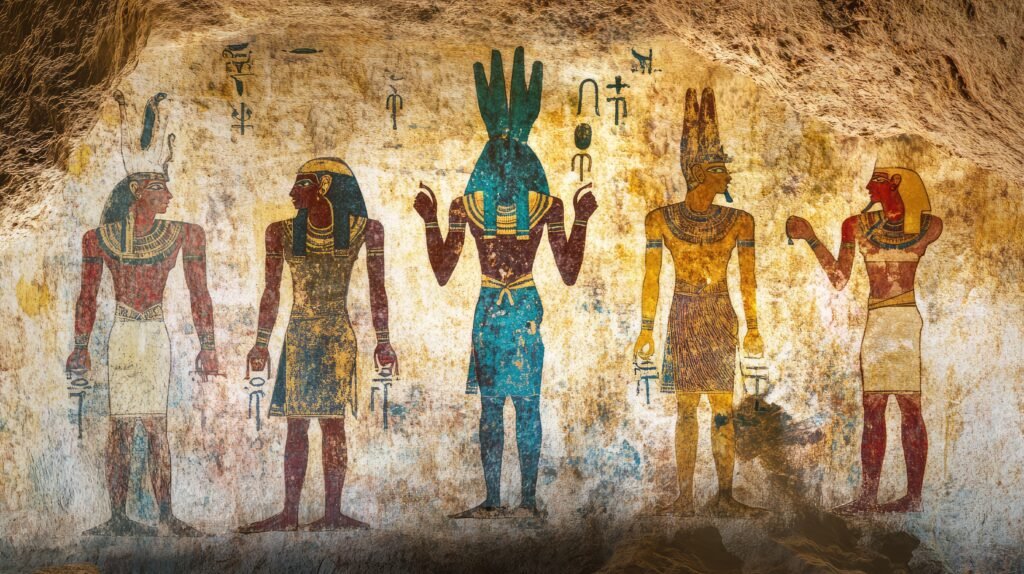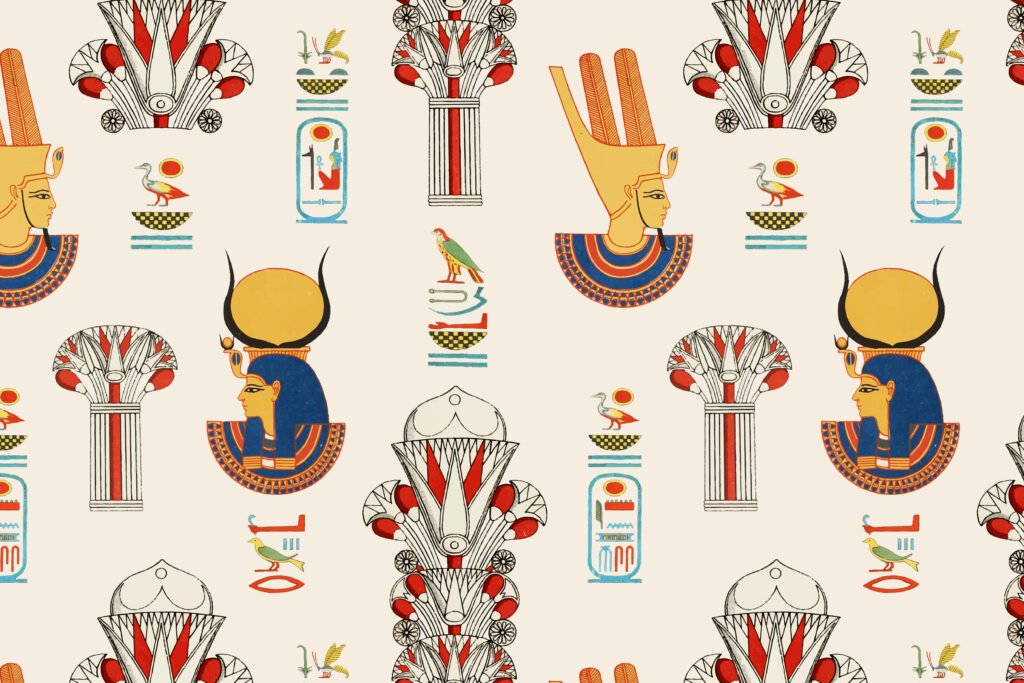Egyptian art has fascinated the world for millennia. Its rigid forms, vibrant colors and powerful symbols continue to influence artists, designers and scholars. More than just beautiful images, these works expressed a deep worldview linked to eternity, cosmic order and divinity.
In Ancient Egypt, art was not created for aesthetic pleasure. It served a religious and political function. Every line, color and figure followed strict conventions to ensure harmony between the earthly and spiritual worlds. That is why the legacy of Egyptian art remains so alive and relevant today.
The Symbolic Structure of Egyptian Art
Egyptian art was built on a codified symbolic language. Color use, for example, was highly intentional. Blue represented the Nile and rebirth; green meant fertility and life; gold symbolized eternity and the divine. These colors dominated temple walls, sarcophagi, ceremonial objects and funerary paintings.

In addition, human figures followed rigid conventions: faces and legs were shown in profile, while the torso faced front. This style, known as hierarchical perspective, also scaled up the most important figures to symbolize their spiritual and social power.
According to the study The Art of Ancient Egypt, from the Metropolitan Museum of Art, published in 2009, this symbolic structure aimed to fix the order of the world, eternalizing the role of gods and pharaohs. Art did not portray the world as it was, but as it should be.
Colors and Eternity in Temples and Tombs
Another fascinating aspect is how Egyptian art expressed the idea of eternity. Temples were decorated with bas-reliefs narrating divine and historical achievements. Tombs, in turn, served as illustrated books about the afterlife.
As highlighted by the British Museum in its “Ancient Lives” exhibition, Egyptian funerary art acted as a spiritual guide. The painted hieroglyphs, sculptures and burial objects protected the deceased and guaranteed their continuity in the afterlife.
Even today, the visual impact of these works is stunning. Renowned institutions such as the Louvre and MoMa frequently hold exhibitions dedicated to Ancient Egypt, showing how this aesthetic continues to influence contemporary design, architecture and fashion.
The Legacy of Egyptian Art Today
Although it originated over 3,000 years ago, the legacy of Egyptian art still resonates. Elements such as symmetry, proportion and religious iconography are explored by artists like Jean-Michel Basquiat, who often included Egyptian gods and symbols in his work.
Furthermore, Egyptian symbolism appears in films, jewelry, tattoos and luxury brands. Fashion designer Christian Dior, for instance, launched a collection in 2004 inspired directly by Egyptian art’s shapes and colors, reaffirming its place in the modern imagination.
Egyptian art survives not only as an archaeological subject but as a timeless visual language. By blending beauty, religion and politics, it reminds us that art has always been – and still is – a way to make sense of life and death.



